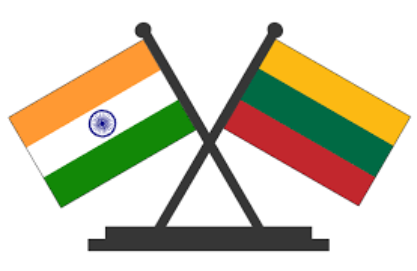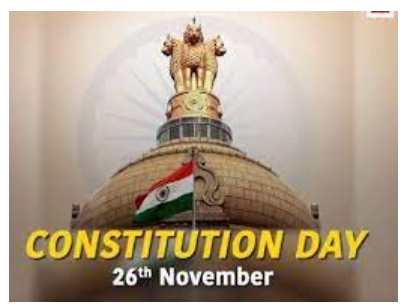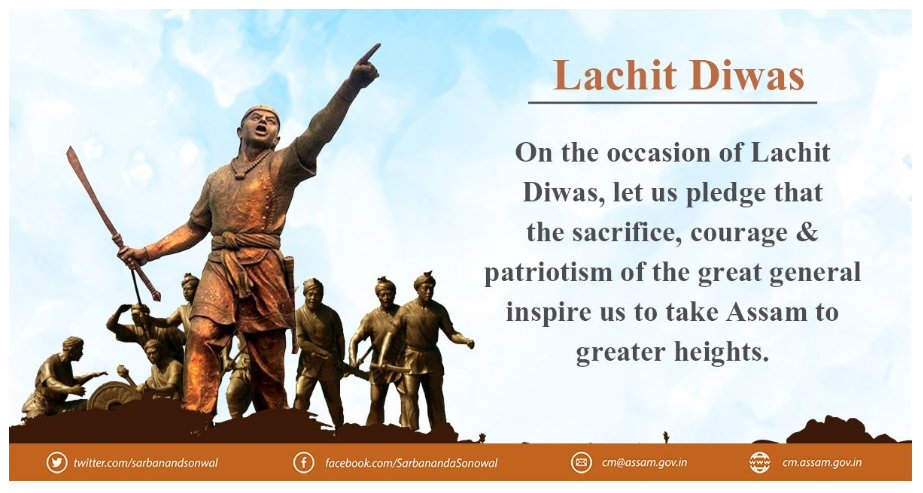Tuesday, 28th November 2023
The authority of the governor in relation to state bills
In News: The Supreme Court of India has clarified that when the Governor withholds assent to a Bill, they must follow the prescribed course of action outlined in Article 200 of the Constitution.
Governor's Authority over Bills as Per Constitution
- Article 200: Legislative Assembly Bills
- Article 200 of the Indian Constitution delineates the procedure for a Bill approved by the Legislative Assembly of a State to be presented to the Governor for approval.
- The Governor holds the power to either give assent, withhold assent, or reserve the Bill for consideration by the President.
- Additionally, the Governor may return the Bill with a message, urging reconsideration by the House or Houses.
- Article 201: Presidential Consideration
- Article 201 specifies that when a Bill is reserved for the President's consideration, the President can either grant or withhold assent.
- The President also possesses the authority to instruct the Governor to send the Bill back to the State Legislature for further review.
Governor's Options
- Assent or Reconsideration
- The Governor has the discretion to grant assent to the Bill or send it back to the Assembly, requesting reconsideration of specific provisions or the Bill in its entirety.
- Reservation for Presidential Consideration
- Reservation for the President's consideration is mandatory if the Bill jeopardizes the position of the state high court
- The Governor can also reserve the Bill if it contradicts the Constitution, opposes the Directive Principles of State Policy (DPSP), goes against the national interest, addresses matters of grave national importance, or deals with compulsory property acquisition under Article 31A.
- Withholding Assent:
- Although rarely exercised due to potential unpopularity, the Governor has the authority to withhold assent to a Bill.
Governor's Discretionary Powers on Withholding Assent to a Bill
- The interpretation of Article 200 raises a crucial question: Can the Governor withhold assent to a Bill based solely on discretionary powers, or must it be in accordance with the advice of the Council of Ministers?
- While a straightforward reading of Article 200 suggests that the Governor can indeed withhold assent, experts challenge this by questioning whether such discretion is permissible only when exercised on the advice of the Council of Ministers.
- The Constitution explicitly outlines in Article 154 that the Governor is to exercise executive powers solely on the advice of the Council of Ministers.
- This raises the larger issue of why the Governor should be granted the authority to withhold assent when a Bill has already been passed by the Assembly.
- This constitutional and procedural complexity prompts a deeper examination of the rationale behind allowing the Governor discretionary powers in the assent process, particularly after a legislative body has already approved the Bill.
- The tension between gubernatorial discretion and ministerial advice adds a layer of complexity to the interpretation of the Governor's role in the legislative process.
Challenges Associated with Pending Bills
- Delay in Decision-Making
- Impact on Governance
- The Governor's failure to make timely decisions on Bills passed by the legislature results in a delay that hampers the effective functioning of the state government.
- Implementation Delays
- When the Governor does not act promptly on Bills approved by the assembly, it postpones the implementation of policies and laws, affecting the intended outcomes.
- Impact on Governance
- Undermining the Democratic Process
- Political Manipulation
- Governors, being appointed by the Centre, may exploit their powers to deliberately delay or reject Bills passed by state assemblies for political reasons.
- This undermines the democratic process by introducing political considerations into the decision-making.
- Political Manipulation
- Public Perception
- Inefficiency and Corruption Perception
- The public often perceives pending Bills with the Governor as a reflection of inefficiency or even corruption within the state government.
- This perception can damage the government's reputation, eroding public trust.
- Inefficiency and Corruption Perception
- Lack of Accountability
- Opaque Decision-Making
- When the Governor withholds assent to a Bill, the absence of a clear and accountable explanation for the decision raises concerns.
- This lack of transparency contradicts the principles of transparent governance, leaving citizens uninformed about the reasons behind the Governor's actions.
- Opaque Decision-Making
Key Recommendations to Address These Issues
- Timely Decision-Making
- Governors should adhere to the constitutional guidelines, especially those outlined in Article 200, to ensure timely decision-making on Bills.
- Democratic Integrity
- Governors should refrain from using their powers to delay or reject Bills for political reasons, preserving the democratic integrity of the legislative process.
- Public Communication
- Governors should communicate their decisions on Bills transparently, providing reasons for withholding assent.
- This proactive communication helps in maintaining public trust and understanding.
- Enhancing Accountability
- Establishing mechanisms for Governors to provide clear justifications for their decisions enhances transparency and accountability in governance.
|
UPSC Previous Year Questions Prelims (2014) Q. Which of the following are the discretionary powers given to the Governor of a State?
Select the correct answer using the code given below: (a) 1 and 2 only Ans: (b) Exp;
|
Source: TH
India-Lithuania Relations - Edukemy Current Affairs
In News: Recently, the Minister of State for Ports, Shipping, and Waterways of India met with the Vice Minister in the Ministry of Foreign Affairs of Lithuania to strengthen maritime bilateral relations.

Major Meeting Highlights
- Inauguration of Resident Mission in Vilnius
- The commencement of India's Resident Mission in Vilnius was praised as a significant move, underscoring India's commitment to strengthening ties with Lithuania.
- Growth in Bilateral Trade
- India highlighted the upward trajectory of bilateral trade, noting a consistent increase to USD 472 million by the fiscal year 2022-23, indicating a steady rise in economic collaboration.
- Collaboration on Port Infrastructure and Klaipeda Port's Advantages
- Discussions focused on exploring collaboration opportunities, utilizing India's expertise in port infrastructure development.
- Emphasis on leveraging Lithuania's strategic location, particularly Klaipeda port's year-round ice-free status and its pivotal role as the leading Baltic port for container transshipment.
- Diverse Investment Opportunities
- India presented a range of investment prospects to Lithuania across sectors such as Port Modernization (PPP), Port Connectivity, Coastal Shipping, Maritime Technology, Sagarmala Project, and Decarbonization initiatives.
- Aimed at fostering comprehensive economic partnerships and sustainable growth between the two nations.
Major Aspects of India-Lithuania Relations
- Historical Ties
- Ancient linguistic connections between Lithuanian and Sanskrit languages suggest historical ties.
- Worship of nature and reverence for a trinity of gods - Perkunas, Patrimpas, and Pikuolis.
- 19th-century philosopher Vydunas drew parallels between Lithuanian and Hindu spiritual culture, fostering philosophical connections.
- In the 1970s, Sanskrit became part of Vilnius University's curriculum, strengthening academic ties.
- Political Relations
- India recognized Lithuania's independence in 1991 and established diplomatic relations in 1992.
- Lithuania opened its Embassy in New Delhi in 2008, maintaining Honorary Consuls in India. India has an Honorary Consul in Vilnius since 2014.
- Initiated in 2010, fostering multi-dimensional ties in culture, education, business, and science.
- Trade Dynamics
- Edible vegetables, wood, textiles, electrical machinery, iron and steel, optical instruments.
- Nuclear boilers, pharmaceutical products, fish, organic chemicals, textile articles, iron and steel.
- Cultural Engagement
- Lithuanians display a strong interest in Indian cultural traditions, particularly Yoga, with widespread celebrations of International Yoga Day.
- Over 400 Lithuanian nominees participated in various courses under India's ITEC program, facilitating mutual learning and cooperation in technical and economic domains.
Source: PIB
Femicide - Edukemy Current Affairs
In News: Recently, the United Nations Office on Drugs and Crime (UNODC) and UN Women published a study titled "Gender-related Killings of Women and Girls (Femicide/Feminicide)," unveiling a surge in such incidents in 2022.

About Femicide
- Femicide, or feminicide, denotes the intentional killing of women or girls solely based on their gender.
- This gender-based crime is deeply rooted in societal attitudes and discrimination against women.
- Unlike homicide, femicide specifically targets individuals due to their gender, often involving instances where women are murdered by partners, family members, or individuals influenced by factors such as misogyny, gender-based violence, or cultural beliefs that devalue women.
Key Findings of the Study
- Femicide Trends
- In 2022, there were approximately 89,000 intentional killings of women and girls globally, marking the highest annual figure in the past two decades.
- While global homicides overall decreased in 2022 after a spike in 2021, the number of female homicides did not show a corresponding decline.
- Perpetrator-Victim Disparity
- Women are more likely to be victims of homicides related to intimate partners or family compared to men.
- While 80% of worldwide homicides in 2022 targeted men and boys, women and girls constituted approximately 53% of all victims of home-based killings and 66% of victims of intimate partner homicides.
- Continental Trends
- Africa reported the highest number of intimate partner and family-related homicides of women in 2022, surpassing Asia for the first time in 13 years.
- Despite reporting fewer cases, the Americas exhibited relatively higher rates of femicides per 100,000 female population.
- Regional Variations and Recent Changes
- In 2022, Africa became the region with the highest absolute number of femicide victims, surpassing Asia.
- It also had the highest number of victims relative to its female population (2.8 victims per 100,000 women).
- Between 2010 and 2022, Europe experienced an average reduction of 21% in female intimate partner and family-related homicides.
- However, variations existed across sub-regions, with some setbacks in Western and Southern Europe, particularly since the onset of the Covid-19 pandemic in 2020.
- India-Specific Insights
- India witnessed a slight decline in gender-based killings over the past decade.
- Challenges such as dowry-related deaths, honour killings, and witchcraft accusations continue to exist.
- Dowry-related reasons consistently ranked as the primary cause of gender-related deaths, with honour killings and witchcraft-related murders forming a smaller percentage.
Source: TH
Social Audit - Edukemy Current Affairs
In News: Recent data from the Ministry of Rural Development's Management Information System (MIS) on Social Audit highlights the status and challenges of social audit implementation in the MGNREGS
The status of social audits within the Mahatma Gandhi National Rural Employment Guarantee Scheme (MGNREGS) is as follows
- As per the Management Information System (MIS) on Social Audit, among the 34 States and Union Territories, only six have exceeded the 50% completion mark in conducting social audits for projects under the Mahatma Gandhi National Rural Employment Guarantee Scheme (MGNREGS) in gram panchayats. Kerala leads with 100% coverage, demonstrating a comprehensive approach.
- Five other states exceeding 50% are Bihar (64.4%), Gujarat (58.8%), Jammu and Kashmir (64.1%), Odisha (60.42%), and Uttar Pradesh (54.97%).
- Three states covering 40% or more villages are Telangana (40.5%), Himachal Pradesh (45.32%), and Andhra Pradesh (49.7%).
- Poll-bound states have lower numbers: Madhya Pradesh (1.73%), Mizoram (17.5%), Chhattisgarh (25.06%), and Rajasthan (34.74%).
About Social Audit
- A Social Audit is a comprehensive review process that involves examining official records to ensure that reported state expenditures align with the actual funds spent on the ground.
- In the context of the Mahatma Gandhi National Rural Employment Guarantee Act (MGNREGA) of 2005, social audits serve as an inherent anti-corruption mechanism.
- The process includes quality checks on infrastructure developed under MGNREGA, scrutiny of financial disbursements for wage payments, and verification of procedural adherence.
Objectives
Social audits aim to empower local communities by enabling citizens to scrutinize and assess the efficiency and effectiveness of government initiatives.
Legal Framework
- Section 17 of the MGNREGA mandates the gram sabha to monitor project execution, providing a legal foundation for social audits.
- The Audit of Scheme Rules, 2011 (also known as the Mahatma Gandhi National Rural Employment Guarantee Audit of Schemes Rules, 2011), established by the Ministry of Rural Development in collaboration with the Comptroller and Auditor General (CAG) of India, outlines the procedures for social audits and delineates the responsibilities of entities such as the Social Audit Unit (SAU), state government, and MGNREGA field workers.
- Social audit units operate independently to ensure an unbiased evaluation of programs. These units are entitled to funds equivalent to 0.5% of the MGNREGA expenditure incurred by the state in the preceding year.
- In cases where states neglect regular social audits, the Centre has the authority to withhold funds allocated under MGNREGS.
Challenges in Implementation
- Limited awareness of the legal framework among local communities can hinder their active involvement.
- Insufficient financial resources for Social Audit Units may compromise the thoroughness and effectiveness of audits.
- Political influence can undermine the impartiality of social audits, impacting authenticity and objectivity.
- Lack of cooperation and coordination between implementing authorities and social audit units.
- Inadequate follow-up and action on social audit findings and recommendations.
- Insufficient protection and support for social auditors and whistleblowers facing threats and harassment from vested interests.
|
UPSC Previous Year Questions Prelims (2011) Q. Among the following who are eligible to benefit from the “Mahatma Gandhi National Rural Employment Guarantee Act”? (a) Adult members of only the scheduled caste and scheduled tribe households Ans: (d) |
Source: TH
Constitution Day - Edukemy Current Affairs
In News: On November 26, 2023, the Ministry of Law and Justice, in partnership with the Indian Law Institute, commemorated Constitution Day.

Key Points About Constitution Day in India
- Constitution Day, also recognized as National Law Day or Samvidhan Diwas, is annually observed on November 26th to mark the adoption of the Constitution of India.
- Established on August 29, 1947, the Constituent Assembly formed a Drafting Committee led by Dr. B.R. Ambedkar to prepare the Constitution.
- On November 26, 1949, the Constitution of India was adopted by the Constituent Assembly, officially enforced on January 26, 1950.
- Recognizing the significance of this day, the Ministry of Social Justice and Empowerment declared November 26 as 'Constitution Day' on November 19, 2015.
- This day aims to promote awareness about the constitution and honor the contributions of B.R. Ambedkar, the principal architect of the constitution.
Key Facts About the Constitution of India
- The Constitution of India holds the distinction of being the world's lengthiest written constitution among sovereign nations.
- Initially crafted in English and Hindi, the constitution was calligraphed by Prem Behari Narain Raizada and artistically adorned by Shantiniketan's artisans under Nandalal Bose's guidance.
- The constitution's creation spanned 2 years, 11 months, and 18 days.
- Rooted in the Government of India Act, 1935, the Indian Constitution proclaims the country as a sovereign, socialist, secular, and democratic republic, ensuring justice, equality, liberty, and fraternity for its citizens.
- Dr. B. R. Ambedkar, leading a seven-member committee, is revered as the chief architect of the Indian Constitution.
- Drawing inspiration from various global constitutions, including those of the US, UK, Ireland, France, Canada, Australia, and Japan, the Indian Constitution embodies diverse constitutional principles.
|
UPSC Previous Year Questions Prelims (2023) Q. Consider the following statements in respect of the Constitution Day Statement-I: The Constitution Day is celebrated on 26th November every year to promote constitutional values among citizens. Statement-II: On 26th November, 1949, the Constituent Assembly of India set up a Drafting Committee under the Chairmanship of Dr. B.R. Ambedkar to prepare a Draft Constitution of India. Which one of the following is correct in respect of the above statements? (a) Both Statement-I and Statement-II are correct and Statement-II is the correct explanation for Statement-I (b) Both Statement-I and Statement-II are correct and Statement-II is not the correct explanation for Statement-I (c) Statement-I is correct but Statement-II is incorrect (d) Statement-I is incorrect but Statement-II is correct Ans: (c) Prelims (2023) Q. Which one of the following statements best reflects the Chief purpose of the 'Constitution' of a country? (a) It determines the objective for the making of necessary laws. (b) It enables the creation of political offices and a government. (c) It defines and limits the powers of government. (d) It secures social justice, social equality and social security. Ans: (c) Exp:
Prelims (2021) Q. What was the exact constitutional status of India on 26th January, 1950? (a) A Democratic Republic Ans: (b) Exp:
Mains (2015) Q. It would have been difficult for the Constituent Assembly to complete its historic task of drafting the Constitution for Independent India in just three years but for the experience gained with the Government of India Act, 1935. Discuss. |
Source: PIB
Lachit Diwas - Edukemy Current Affairs
In News: Prime Minister Narendra Modi recently honored Lachit Borphukan on Lachit Diwas, observed annually on 24th November.

Lachit Borphukan: Hero of Assam's Independence
- Lachit Borphukan, born on 24th November 1622, was a renowned commander and viceroy in the Ahom kingdom, located in present-day Assam, India.
- Celebrated for his leadership, Lachit Borphukan played a pivotal role in the historic Battle of Saraighat in 1671.
- In this battle, he successfully thwarted the Mughal army sent by Emperor Aurangzeb, safeguarding Assam from Mughal conquest.
- His legacy endures as a symbol of Assam's historical autonomy and cultural identity. Annually, on 24th November, Lachit Diwas is observed across the state in commemoration of his birth anniversary.
- To honor his contribution, the Lachit Borphukan Gold Medal was instituted in 1999, presented to the best cadet from the National Defence Academy.
Source: NM
Initial draft text for addressing the issue of plastic pollution.
In News: Recently, the 3rd Session of Intergovernmental Negotiating Committee (INC-3) at UNEP Headquarters, Nairobi concluded.
Key Developments in the 3rd Session of Intergovernmental Negotiating Committee (INC-3) on Plastic Pollution
- During the recent INC-3 session held at UNEP Headquarters in Nairobi, Kenya, there was a focused effort to formulate an international legally binding instrument addressing plastic pollution, particularly in the marine environment.
- While progress was made, challenges arose as consensus on the zero draft text proved elusive.
- The zero draft presented during INC-3 outlines essential elements for the proposed international legally binding instrument, emphasizing its scope within the context of plastic pollution in marine environments.
- The draft aims to cover prevention, regulation, and mitigation, encompassing technical, regulatory, institutional, and procedural aspects crucial for effective implementation.
- India actively supports and participates in this crucial development, underlining its commitment to addressing the global issue of plastic pollution.
- Looking ahead, INC-4 and INC-5 are slated to be hosted by Ottawa, Canada, in the coming months and by Busan, South Korea, in November 2024, respectively.
Source: UNEP
Prolonged warmth may have caused a major pest outbreak in Assam.
In News: Extended periods of high temperatures likely caused a major Mythimna separata pest infestation in Assam, damaging about 28,000 hectares of paddy crops across 15 districts.

Understanding the Threat of Mythimna Separata: Impact of Climate Change on Pest Dynamics
- Mythimna separata, commonly known as the ear head cutting caterpillar, rice ear-cutting caterpillar, or armyworm, is a destructive pest with a penchant for feeding on leaves and cutting panicles from crop plants at the base.
- This feeding behavior often leaves fields resembling those grazed by cattle.
- In the context of a warming world, shifts in temperature and rainfall emerge as significant factors influencing the spread of pests and diseases.
- Elevated global temperatures contribute to shortened insect lifecycles, leading to increased pest populations, extended geographical ranges, prolonged development seasons, and heightened risks of invasion by migrant pests and overwintering.
Source: DTE
NASA's Atmospheric Waves Experiment
In News: NASA has introduced the Atmospheric Waves Experiment (AWE) amid growing disturbances in satellite communication and GPS systems.

About Atmospheric Waves Experiment (AWE)
- NASA's Atmospheric Waves Experiment (AWE) is a pioneering initiative within the Heliophysics Explorers Program, designed to explore the connections between lower atmospheric waves and space weather.
- Positioned on the International Space Station (ISS), AWE observes colorful air glows in the Earth's atmosphere, focusing on the mesopause region (approximately 85 to 87 km above the Earth's surface).
- Utilizing the Advanced Mesospheric Temperature Mapper (ATMT), AWE employs imaging radiometers to capture brightness at specific wavelengths.
- The mission's primary objective is to comprehend the forces influencing space weather and assess the potential impact of terrestrial weather on it.
- The data collected by AWE will enhance weather models, contributing to improved weather forecasts.
|
UPSC Previous Year Questions Prelims (2022) Q. If a major solar storm (solar flare) reaches the Earth, which of the following are the possible effects on the Earth?
Select the correct answer using the code given below: (a) 1, 2, 4 and 5 only Ans: (c) |
Source: IE
59th Session of the International Tropical Timber Council
In News: The 59th session of the ITTC, governing the ITTO, concluded with crucial decisions impacting sustainable tropical forest management and trade in sustainably produced tropical timber.
Key Outcomes of ITTC session
- The nations agreed to support eight projects associated with sustainable forest management and related goals.
- The session also greenlit a budget of USD 7.1 million for the upcoming fiscal year 2024-25.
- Additionally, the council endorsed a trial measure permitting ineligible members to submit project proposals and concept notes.
- Those in arrears on their financial contributions and considered ineligible will be allowed to submit one project and concept note for every two years of arrears paid.
- The Council further embraced the work program for 2024-25, emphasizing collaboration with members of the Collaborative Partnership on Forests and other partners to ensure effective implementation.
Source: IE
Adapting to Climate Change with Climate-Smart Agriculture.
In News: In the 21st century the ongoing climate change effects, such as heat waves, flash floods, and droughts, are adversely impacting lives and livelihoods.
Understanding Climate-Smart Agriculture
Definition
Climate-smart agriculture serves as a strategic approach guiding the shift towards environmentally friendly and climate-resilient practices within agri-food systems. Aligned with global targets like the SDGs and the Paris Agreement, it addresses three core objectives:
- Enhancing Productivity and Incomes
- Sustainably increasing agricultural productivity and incomes for a resilient farming community.
- Adapting to Climate Change
- Building resilience to climate change by implementing adaptive strategies.
- Reducing Greenhouse Gas Emissions
- Minimizing or eliminating greenhouse gas emissions through sustainable practices.
Examples of Climate-Smart Practices
- Cultivating Resilient Crop
- Growing crop varieties resistant to climate challenges, pests, and diseases.
- Conservation Agriculture
- Employing no-till and reduced-tillage methods for improved soil health and biodiversity.
- Agroforestry
- Integrating trees and shrubs to create diverse, productive, and environmentally beneficial agricultural systems.
- Precision Irrigation
- Utilizing technologies like drip irrigation and sensors to optimize water use efficiency.
- Variable Rate Fertilization
- Tailoring fertilizer application based on specific crop and field requirements using technology.
Benefits of Climate-Smart Agriculture
- Enhanced Agricultural Productivity
- Climate-smart agriculture (CSA) addresses the challenge of declining resources and rising demand, contributing significantly to climate adaptation, mitigation, and food security.
- Studies in India demonstrate that CSA techniques improve agricultural production, sustainability, and reliability while reducing greenhouse gas (GHG) emissions.
- GHG Emission Reduction
- Given the substantial GHG emissions from agriculture, CSA becomes crucial in achieving emission reduction goals and preserving biodiversity.
- CSA practices, such as agroforestry and carbon sequestration, align with global efforts like the Paris Agreement and contribute to India's international commitments.
- Support for Small Farmers
- In a country where the majority of farmers are small or marginal, CSA plays a vital role in enhancing their profitability.
- CSA adoption becomes essential at the intersection of climate vulnerability and agricultural significance, supporting the economic well-being of small and marginal farmers.
- Biodiversity Conservation
- CSA's ecosystem-based approach and diverse crop varieties foster coexistence between cropland and wild areas.
- This collaboration contributes to safeguarding native plant species, stabilizing pollinator populations, and mitigating habitat degradation effects.
- Reduced Climate Change Impact
- CSA promotes crop diversification, improves water efficiency, and integrates drought-resistant crop varieties, mitigating the disruptive effects of climate change.
- By enhancing resilience to climate-related risks and shocks, CSA prepares agriculture to face challenges like shorter seasons and erratic weather patterns.
Challenges Facing Climate-Smart Agriculture in India
- Limited Awareness and Knowledge
- Challenge of Awareness and Understanding in CSA Adoption.
- Farmers and extension workers may lack awareness of CSA benefits and effective implementation methods.
- Financial, Insurance, and Market Access Constraints
- Financial Constraints in CSA Adoption: Overcoming Barriers.
- Limited access to finance, insurance, and markets poses hurdles for farmers investing in CSA technologies.
- Inadequate Infrastructure and Institutional Support
- CSA Success Relies on Infrastructure and Institutions.
- Supportive infrastructure, including irrigation systems, storage facilities, and guidance from organizations, is vital for CSA success.
- High Costs and Perceived Risks
- Economic Barriers to CSA Adoption: Costs and Risks.
- Initial adoption costs and perceived risks associated with new technologies can be significant obstacles for farmers.
- Policy and Regulatory Obstacles
- Policy Hindrances in CSA Uptake: Addressing Barriers.
- Policies that do not incentivize CSA and regulatory barriers may impede the widespread adoption of climate-smart agricultural practices.
Measures for Enhancing Climate-Smart Agriculture Adoption
- Capacity Building and Awareness
- Comprehensive training, demonstrations, farmer-to-farmer exchanges, and mass media initiatives to enhance understanding of CSA principles and practices.
- Financial and Technical Support
- Providing financial aid and technical assistance to farmers, including subsidies, credit facilities, insurance coverage, market linkages, and digital platforms to encourage the adoption of CSA technologies.
- Policy and Institutional Strengthening
- Strengthening policies and institutions to promote CSA, incorporating CSA into national and state climate action plans, establishing a dedicated CSA fund, and creating a coordination committee for effective implementation.
|
UPSC Previous Year Questions Prelims (2018) Q. With reference to the circumstances in Indian agriculture, the concept of “Conservation Agriculture” assumes significance. Which of the following fall under the Conservation Agriculture?
Select the correct answer using the code given below: (a) 1, 3 and 4 (b) 2, 3, 4 and 5 (c) 2, 4 and 5 (d) 1, 2, 3 and 5 Ans: (c) Prelims (2018) Q2. With reference to the ‘Global Alliance for ClimateSmart Agriculture (GACSA)’, which of the following statements is/are correct?
Select the correct answer using the code given below: (a) 1 and 3 only (b) 2 only (c) 2 and 3 only (d) 1, 2 and 3 Ans: (b) Prelims (2021) Q3. In the context of India’s preparation for Climate-Smart Agriculture, consider the following statements:
Which of the statements given above are correct? (a) 1 and 2 only (b) 2 and 3 only (c) 1 and 3 only (d) 1, 2 and 3 Ans: (d) Mains (2014) Q1. Discuss the various economic and socio-cultural forces that are driving increasing feminization of agriculture in India. Mains (2021) Q2. What are the present challenges before crop diversification? How do emerging technologies provide an opportunity for crop diversification? |
Source: TH
Share the article
Edukemy’s Current Affairs Quiz is published with multiple choice questions for UPSC exams
MCQ
Get Latest Updates on Offers, Event dates, and free Mentorship sessions.

Get in touch with our Expert Academic Counsellors 👋
FAQs
UPSC Daily Current Affairs focuses on learning current events on a daily basis. An aspirant needs to study regular and updated information about current events, news, and relevant topics that are important for UPSC aspirants. It covers national and international affairs, government policies, socio-economic issues, science and technology advancements, and more.
UPSC Daily Current Affairs provides aspirants with a concise and comprehensive overview of the latest happenings and developments across various fields. It helps aspirants stay updated with current affairs and provides them with valuable insights and analysis, which are essential for answering questions in the UPSC examinations. It enhances their knowledge, analytical skills, and ability to connect current affairs with the UPSC syllabus.
UPSC Daily Current Affairs covers a wide range of topics, including politics, economics, science and technology, environment, social issues, governance, international relations, and more. It offers news summaries, in-depth analyses, editorials, opinion pieces, and relevant study materials. It also provides practice questions and quizzes to help aspirants test their understanding of current affairs.
Edukemy's UPSC Daily Current Affairs can be accessed through:
- UPSC Daily Current Affairs can be accessed through Current Affairs tab at the top of the Main Page of Edukemy.
- Edukemy Mobile app: The Daily Current Affairs can also be access through Edukemy Mobile App.
- Social media: Follow Edukemy’s official social media accounts or pages that provide UPSC Daily Current Affairs updates, including Facebook, Twitter, or Telegram channels.





